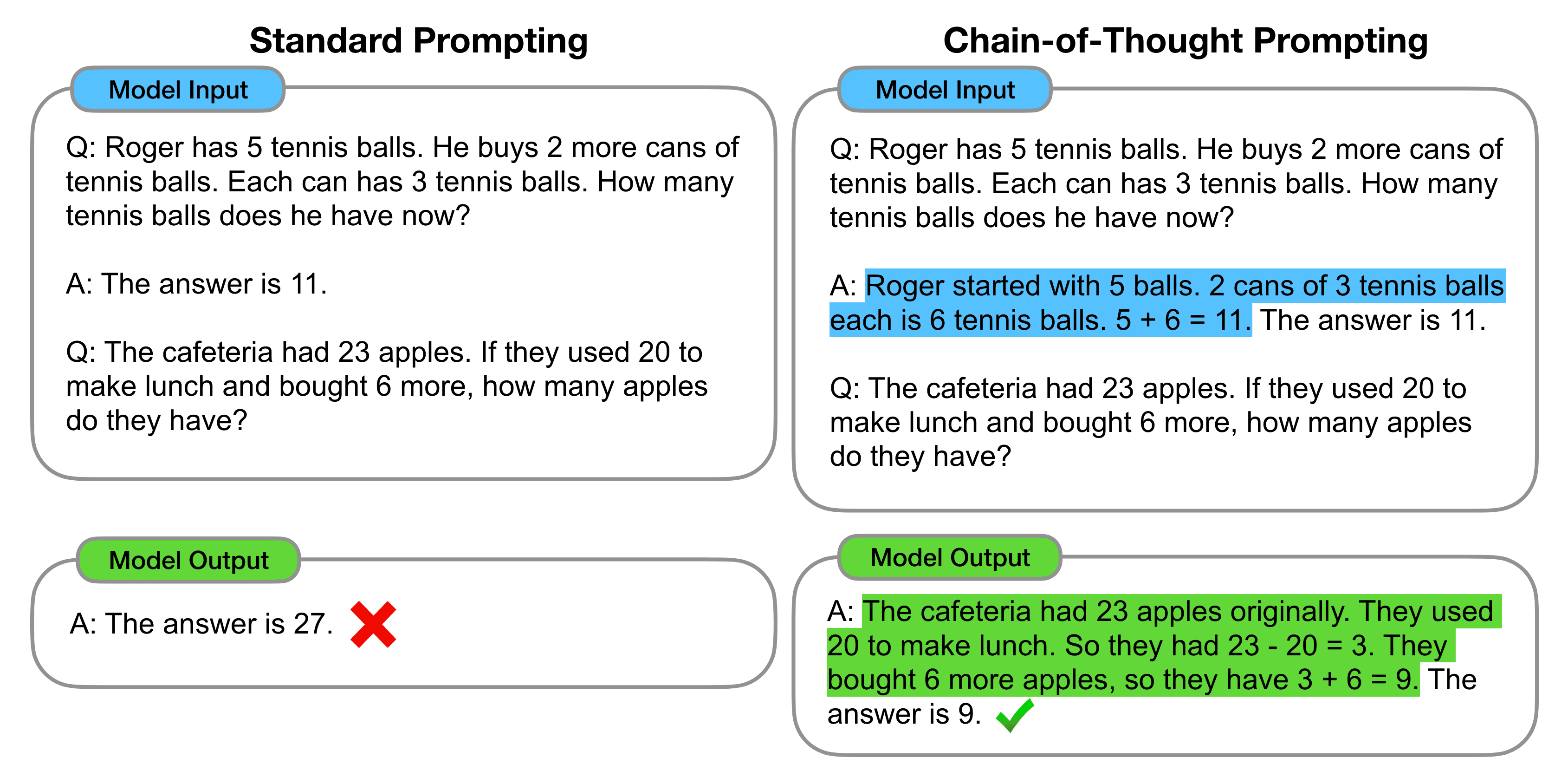Advanced Prompting Techniques: Unlocking the Full Potential of AI Assistants

As AI assistants become integral to our daily routines and professional tasks, effective communication with these systems becomes an essential skill. Advanced prompting techniques offer a powerful way to improve the quality and relevance of AI-generated responses. Whether you're in marketing, management, or simply looking to maximize your AI interactions, mastering these strategies can significantly streamline your workflow and boost productivity. This guide will equip you with practical insights and examples to unlock the full potential of AI, transforming how you work and think.
The Art and Science of Crafting Effective Prompts
At its core, prompting is about communication. It's the art of framing your questions and instructions in a way that maximizes the AI's understanding and output. Think of it as learning to speak a new language – the language of AI. Just as you wouldn't expect a person learning English to understand complex idioms or cultural references right away, AI assistants need clear, well-structured prompts to deliver the best results.
Let's dive into some of the key techniques that can elevate your AI interactions from good to great.
Setting the Stage with System Prompts
Imagine you're directing a play. Before the actors can deliver their lines, they need to understand the setting, their character's background, and the overall tone of the performance. System prompts serve a similar purpose for AI assistants. They provide crucial context that shapes how the AI interprets and responds to subsequent prompts.
A well-crafted system prompt might look something like this:
You are an expert financial analyst with 20 years of experience in the tech sector. Your role is to provide clear, concise explanations of complex financial concepts and market trends to a non-technical audience. Use analogies and real-world examples where appropriate to illustrate your points.
By setting this context, you're priming the AI to adopt a specific persona and communication style. This can lead to more focused, relevant responses that are tailored to your needs.
Structuring Input with XML Tags
In the world of programming, structure is everything. The same principle applies to prompting. By using XML tags to organize your input, you can help the AI better understand and categorize the information you're providing.
For example, instead of presenting a jumble of text, you might structure your prompt like this:
<background> The company experienced a 15% drop in revenue last quarter due to supply chain disruptions. </background> <question> How might this impact investor confidence, and what strategies could the company employ to mitigate potential fallout? </question>
This structured approach helps the AI parse your input more effectively, leading to more accurate and targeted responses.
The Power of Clear Instructions
Clarity is king when it comes to prompting. Vague or ambiguous instructions can lead to equally vague or off-topic responses. Instead, be specific about what you want. Consider the difference between these two prompts:
Vague: "Tell me about artificial intelligence."
Clear: "Provide a 300-word explanation of how artificial intelligence is currently being used in healthcare, focusing on diagnostic applications and potential ethical concerns."
The second prompt gives the AI a clear roadmap, specifying the topic, length, focus areas, and even the angles to consider. This level of detail helps ensure that the response aligns closely with your needs.
Enhancing Output Quality and Consistency
Now that we've covered some basic techniques for structuring your prompts, let's explore strategies for improving the quality and consistency of AI-generated content.
Specifying Output Format
Just as you can structure your input, you can also guide the AI on how to structure its output. This is particularly useful when you need information presented in a specific format, such as a report, a list, or a dialogue.
For instance:
Generate a weekly sales report using the following format: <summary>
Brief overview of overall sales performance </summary> <top_performers> List of top 3 sales representatives and their total sales </top_performers> <areas_for_improvement> Identify 2-3 areas where sales could be enhanced </areas_for_improvement> <action_items> Suggest 3-5 concrete steps to boost next week's sales </action_items>
By providing this structure, you ensure that the AI's response will be organized in a way that's immediately useful to you, saving time on reformatting or reorganizing the information.
The Magic of Examples
Sometimes, the best way to communicate what you want is to show, not tell. Providing examples in your prompt can be an extremely effective way to guide the AI's output. This technique, often called "few-shot learning," can help the AI understand nuances that might be difficult to explain explicitly.
For example, if you're looking to generate product descriptions in a specific style, you might include an example like this:
Please generate 5 product descriptions in the style of the following example: Example: "Our Cloudsoft Pillow isn't just a place to rest your head – it's an invitation to dreamland. Crafted with revolutionary memory foam that contours to your unique shape, this pillow cradles you in comfort that feels like a gentle hug from the sky. Say goodbye to restless nights and hello to mornings where you wake up feeling like you've slept on a cloud." Now, generate descriptions for the following products: 1. Ergonomic office chair 2. Noise-cancelling headphones 3. Smart thermostat 4. Portable solar charger 5. Air purifier
By providing this example, you're giving the AI a clear template to follow, ensuring that the generated descriptions match the tone, style, and structure you're looking for.
Advanced Techniques for Nuanced Interactions
As you become more comfortable with basic prompting techniques, you can start to explore more advanced strategies that can lead to even more sophisticated AI interactions.
Chain-of-Thought Prompting

Complex problems often require step-by-step reasoning. Chain-of-thought prompting encourages the AI to break down its thinking process, which can lead to more accurate results and provide insight into how the AI arrived at its conclusion.
Here's an example of how you might use this technique:
Let's approach this problem step-by-step: 1. First, outline the key factors that influence housing prices in urban areas. 2. Next, analyze how each of these factors has changed in New York City over the past decade. 3. Then, consider any unique circumstances or policies specific to New York that might impact housing prices. 4. Based on this analysis, project how housing prices in New York City might change over the next five years. 5. Finally, suggest three potential policy interventions that could help address housing affordability issues in the city. Please provide your reasoning for each step.
This approach not only helps the AI organize its thoughts but also allows you to follow its reasoning, making it easier to spot any logical errors or missed considerations.
Prompt-Chaining
Prompt-chaining is an advanced technique that involves linking multiple prompts together to build a more complex and nuanced conversation with an AI assistant. By using the output from one prompt as the input for the next, you can guide the AI through a more detailed exploration of a topic or problem.
For example, you might start with a broad question, such as:
Prompt 1: "What are the key challenges facing renewable energy adoption in urban areas?"
Once you receive a response, you can take specific points from that answer to dive deeper:
Prompt 2: "Based on the challenges you mentioned, can you elaborate on how policy changes could address the issue of infrastructure for renewable energy?"
This method allows for a more dynamic interaction, encouraging the AI to develop ideas incrementally and providing you with richer, more comprehensive insights. It’s a great way to explore complex subjects in depth while maintaining clarity and direction in the conversation.
You can learn more about prompt-chaining in our blog post A Beginner's Guide to Prompt Chaining.
Role-Playing and Persona Adoption
Sometimes, the perspective from which information is presented can be just as important as the information itself. By asking the AI to adopt a specific persona or role, you can elicit responses that are tailored to a particular viewpoint or expertise level.
For instance:
Please respond to the following question from the perspective of three different experts: Question: "What are the potential implications of widespread adoption of autonomous vehicles?" Respond as: 1. A transportation policy expert 2. An AI ethics researcher 3. An auto industry executive Provide a 150-word response for each perspective, highlighting the unique concerns and viewpoints of each role.
This technique can be particularly useful when you need to consider multiple angles on a complex issue or when you're trying to generate content that resonates with a specific audience.
Embrace Continuous Learning and Experimentation
As we've explored in this post, advanced prompting techniques offer a powerful way to enhance our interactions with AI assistants. From structuring inputs with XML tags to encouraging step-by-step reasoning through chain-of-thought prompting, these strategies can dramatically improve the quality and relevance of AI-generated content.
However, it's important to remember that prompting is an evolving art. As AI technologies continue to advance, new techniques and best practices will undoubtedly emerge. The key is to remain curious, experiment with different approaches, and always keep your end goals in mind.
Whether you're using AI to generate content, analyze data, or solve complex problems, mastering these prompting techniques can help you unlock the full potential of these powerful tools. By learning to communicate effectively with AI, you're not just improving your outputs – you're gaining a valuable skill that will serve you well in an increasingly AI-driven world.
So, the next time you interact with an AI assistant, take a moment to consider how you might refine your prompt. With practice and patience, you'll find yourself having more productive, insightful, and rewarding conversations with your digital collaborators.
Remember, the future of work isn't about AI replacing humans – it's about humans and AI working together more effectively. By mastering advanced prompting techniques, you're positioning yourself at the forefront of this exciting frontier. Happy prompting!


